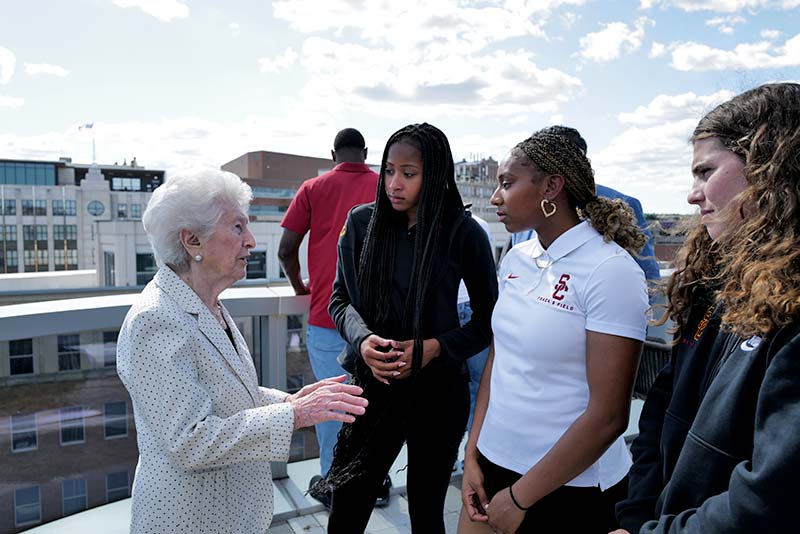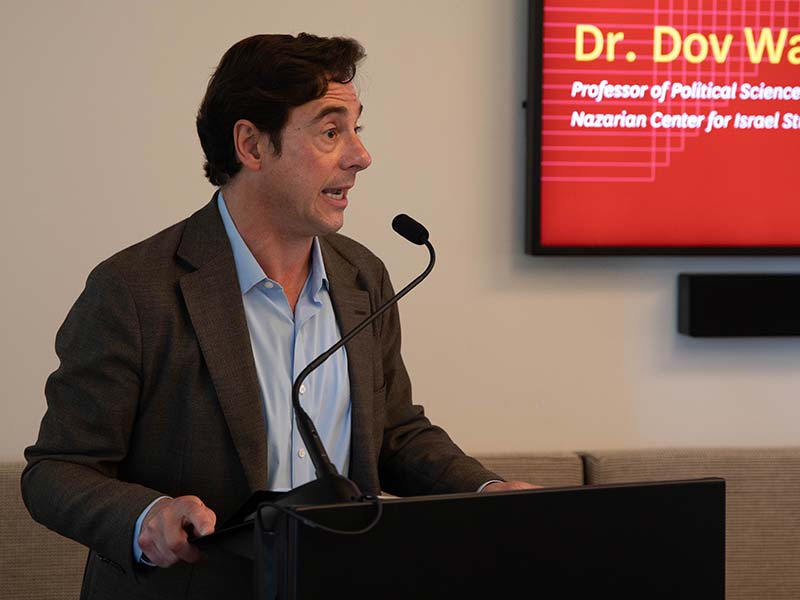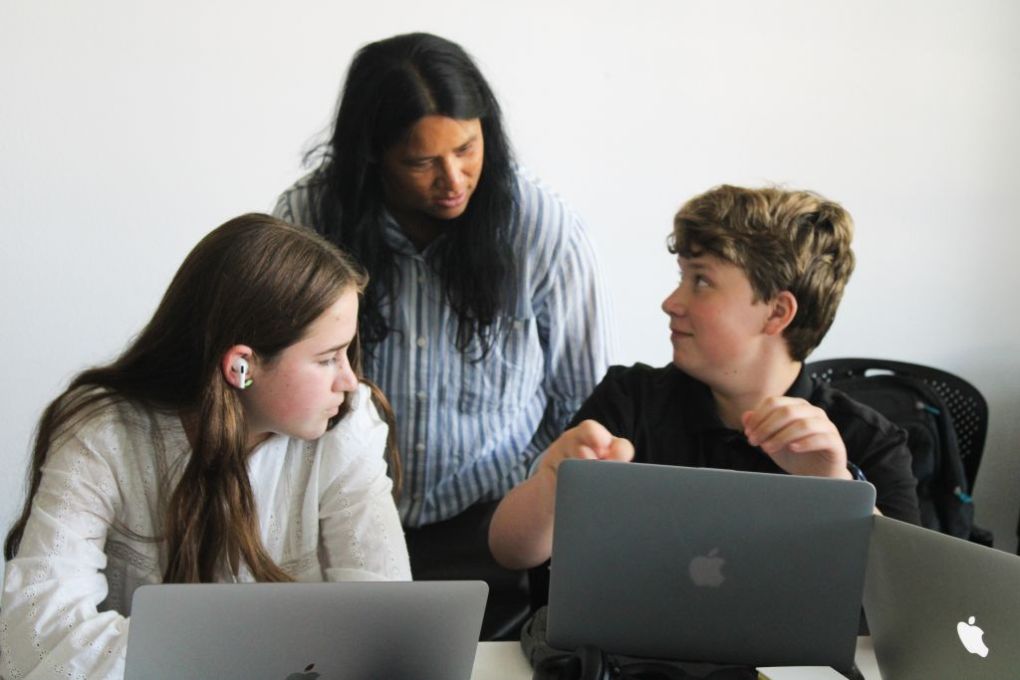From left to right: Ariel Ein-Gal, survivor of the October 7, 2023 Hamas attack in Israel; Hannah Kaye, survivor of the 2019 shooting at the Chabad of Poway synagogue near San Diego; Judah Samet, survivor of the Holocaust and the 2018 shooting at the Tree of Life synagogue in Pittsburgh
Addressing a Global Threat Through Testimony, Research, and Education
More than 55,000 Holocaust survivors shared their testimonies with the USC Shoah Foundation not only to build the public record about one of the darkest chapters in human history, but also to use their personal experiences to contribute to a better future for all of humanity.
Today, in the face of the most alarming resurgence of antisemitism since the Holocaust, we are more focused than ever on understanding and countering this deadly scourge through innovative programming, research, and education.
To anchor our work, we are significantly expanding our Contemporary Antisemitism Collection, an unparalleled and comprehensive effort to chronicle antisemitic violence.
Along with our Core Holocaust Collection, these new testimonies will power our work and offer an invaluable resource in the fight against antisemitism – a threat to Jews, non-Jews, and democratic values everywhere.
Engaging the Leaders of Tomorrow
Our annual Student Leadership program invites USC student-athletes on a transformative trip to our D.C. campus and Poland. During the trip, students engage with testimony, travel to memory sites, learn from scholars, and meet with survivors and policymakers.

Advancing the Latest Scholarship
In 2023-2024, our Daniel and Marisa Klass USC Shoah Foundation Lecture Series brought together leading scholars to guide audiences through current research and explore a diversity of approaches to understanding and combating the alarming upsurge in antisemitism.

Expanding our Contemporary Antisemitism Collection
We have launched an initiative to record thousands of new interviews with individuals who have experienced antisemitism across the globe from 1945 until today, focusing on Jewish communities in the former Soviet Union, Ethiopia, and the Middle East and North Africa, as well as contemporary antisemitism in Israel and North America.

Countering Antisemitism in the Classroom
As antisemitism and other extremist ideologies threaten civil society, we offer educators resources to help students recognize antisemitism, develop critical thinking, and consider their roles as individuals.

New Approaches to Countering Antisemitism
In this video series we reflect on how the battle against antisemitism is a fight for democratic values.